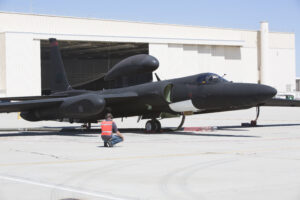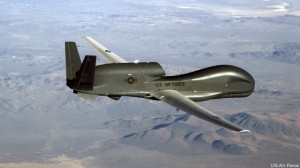 The Air Force is expanding its Open Mission Systems standard because it is working so well, Lt. Gen. Robert Otto, deputy chief of staff for intelligence, surveillance and reconnaissance, said in a Monday interview with Breaking Defense.
The Air Force is expanding its Open Mission Systems standard because it is working so well, Lt. Gen. Robert Otto, deputy chief of staff for intelligence, surveillance and reconnaissance, said in a Monday interview with Breaking Defense.
“Our acquisition community is looking to — maybe proliferate is too strong a word — but broaden the concept,” Otto said. “We think it’s very important.”
Formally adopted April 30, 2014, after two years of collaboration with industry, the Open Mission Systems standard aims to foster competition on subcontracts by adopting the cell phone apps model. Just as Apple publishes standards for integrating technologies that allow other companies to develop applications that work with its iPhone, Open Mission Systems has prime aircraft contractors publish system architecture standards so other companies can make communications, radar and other mission technologies that work with the prime contractor’s platform.
“If you don’t have a published standard, then we go to the prime contractor for everything, and then you don’t have competition,” Otto said. “With an Open Mission System, we can integrate either new sensors or new capabilities or technological updates, and those can be competed separately, depending on how much of it is open. So we see an Open Mission System as a way for us to be able to have competition throughout the life cycle of a weapons system instead of just one competition up front and then it’s proprietary after that.”
Lockheed has tested a number of Open Mission Systems payloads on its U-2 Dragon Lady manned reconnaissance plane and Northrop has tested payloads on its unmanned RQ-4 Global Hawk. Boeing, Raytheon and General Atomics have agreed to the standard, too. “They’re all in,” Otto said.
On another subject, Otto said he largely – but not entirely — agrees with CIA legend Charlie Allen, who told BD last month that manned reconnaissance aircraft are on their way out.
“I have the utmost respect for Charlie Allen,” Otto said. “I have the pleasure of seeing him several times a year. I think he gets that mostly right.” But Otto added that going manned or unmanned is “really mission specific.”
“Charlie Allen, when I saw his comments, was referring mostly to…high altitude reconnaissance, and especially over dangerous territory,” Otto said. “If you’re going into contested airspace when you’re not otherwise at general war, it’d be a heck of a lot better to lose an unmanned airplane than a manned airplane. We proved that with Francis Gary Powers.”
Beyond that, Otto noted, manned aircraft can’t compete with drones for endurance. “We know that it’s hard for a pilot to do a mission – a solo pilot – longer than about 13 hours,” he said. “Our bomber crews have done some at about a day. But there comes a point at which the human becomes a limiting factor. So there are some mission sets that lean towards unmanned aircraft as the way to go.”
At the same time, Otto said, “We also have found, like in Afghanistan and Iraq, that when the weather’s kind of crummy, manned airplanes have a higher mission success rate because there’s somebody there that can dodge the weather and understands the intent and can work their way to a successful mission accomplishment. So while I think the future looks bright for unmanned airplanes, and especially in unmanned reconnaissance, I do believe that there are some roles today that manned airplanes are a better fit.”
Air Force picks Anduril, General Atomics for next round of CCA work
The two vendors emerged successful from an original pool of five and are expected to carry their drone designs through a prototyping phase that will build and test aircraft.


























